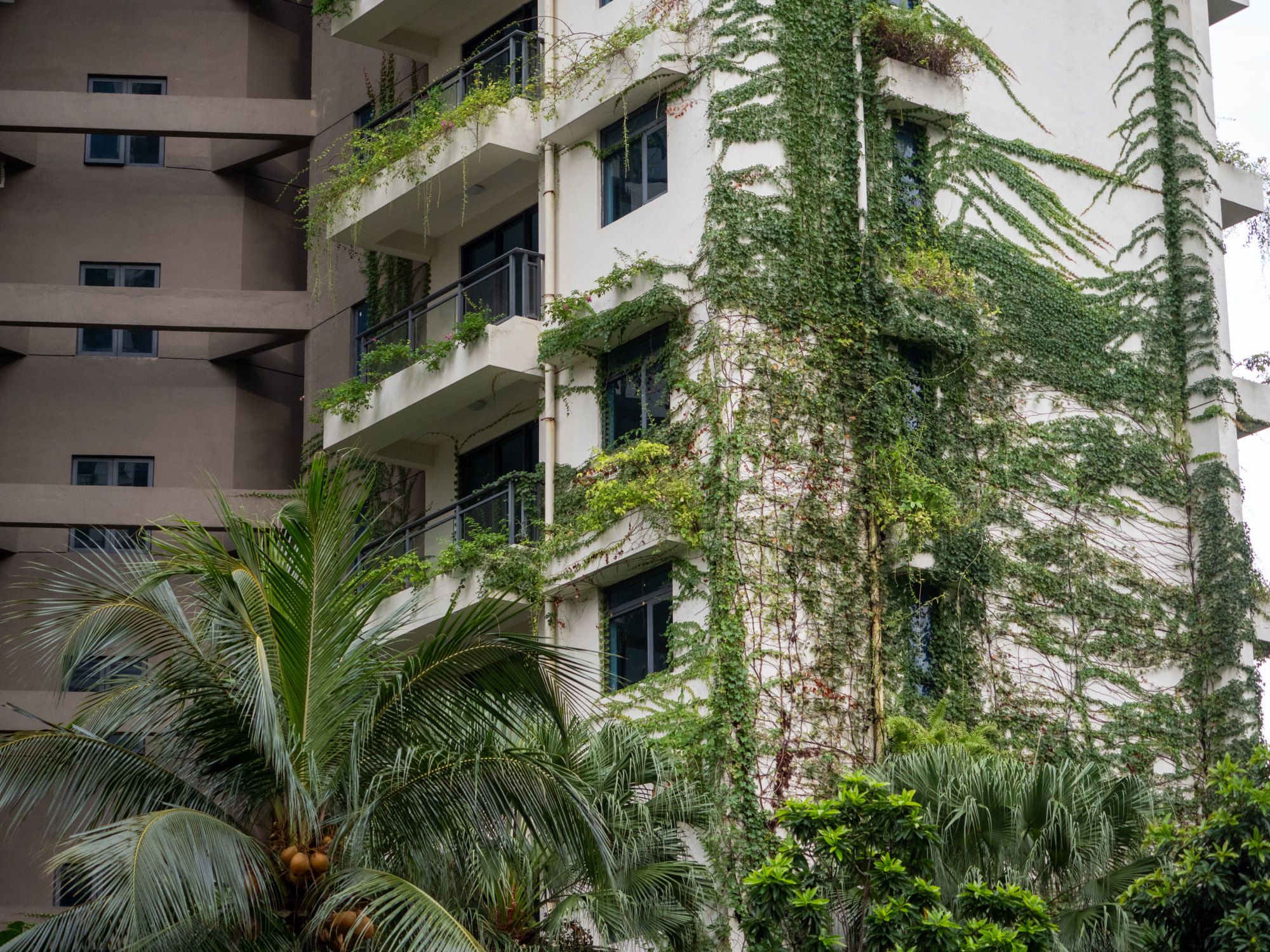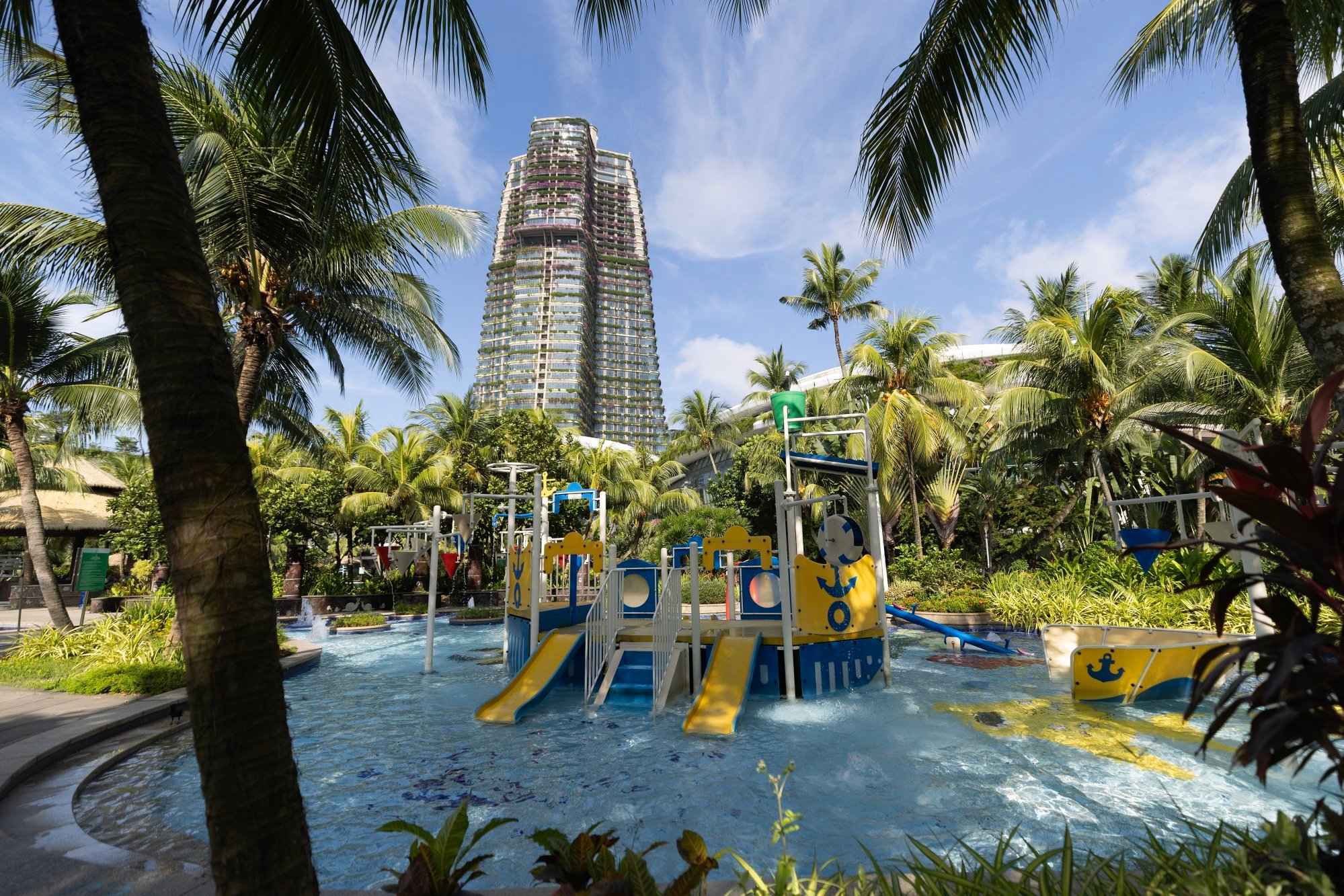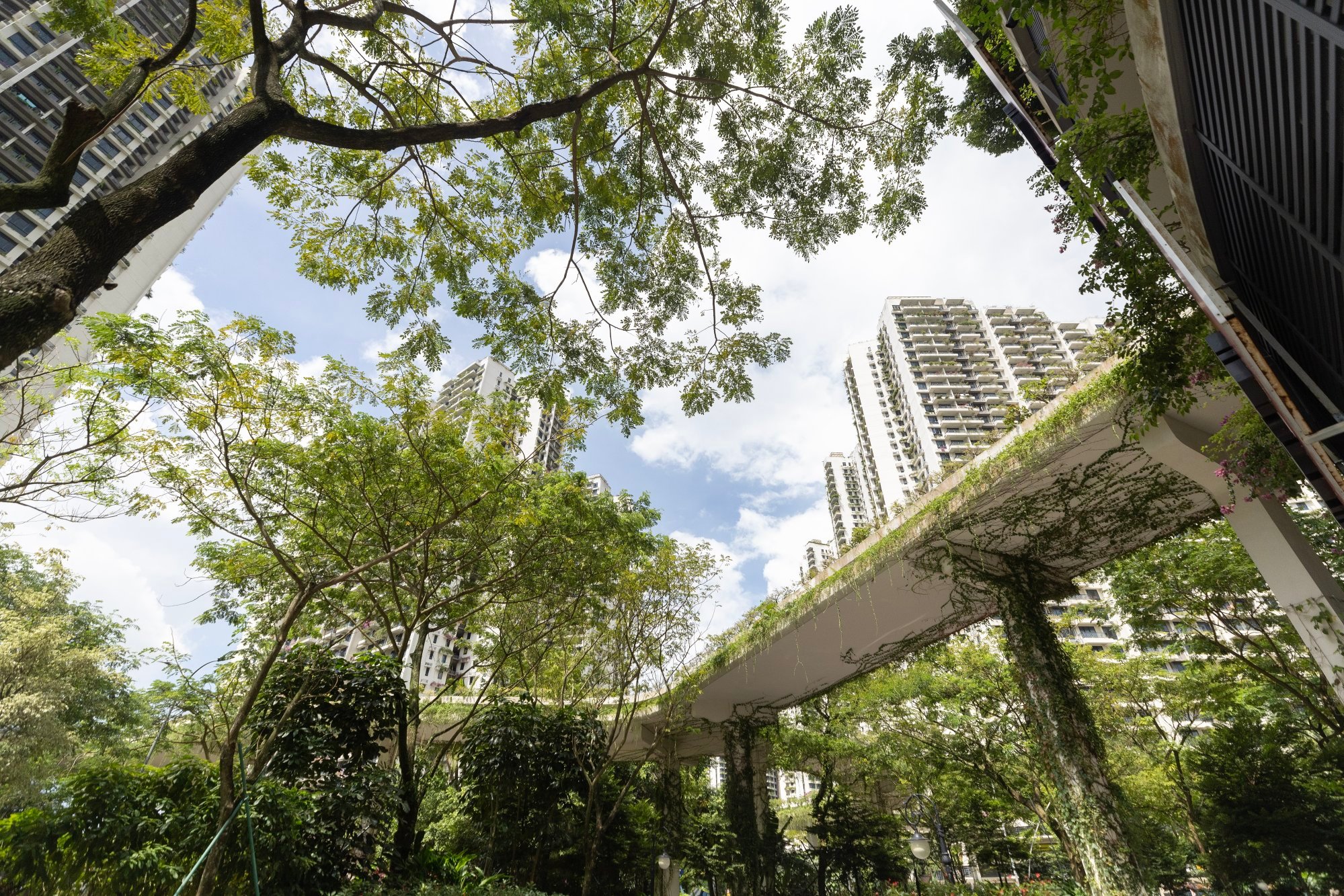Malaysia seeks to revive China-backed Forest City megaproject – never mind the stray dogs, crocodiles and day drinkers
[ad_1]
The malaise starts on entering the wedge of reclaimed land in Johor where cars have to navigate a partially collapsed motorway that was built just a few years ago, while dense tropical undergrowth reclaims buildings and boulevards lined by closed shops.
“People in JB don’t go there,” said Darren Lim, a quantity surveyor in Johor Bahru a short drive away. “There is really nothing to do.”
‘Unprecedented’: Malaysia, Singapore to push ahead with special economic zone
‘Unprecedented’: Malaysia, Singapore to push ahead with special economic zone
In many ways, Forest City is a victim of forces outside of Malaysia’s control. It was built as China’s banks poured money into the expansion plans of the nation’s biggest developers.
Now in a slowing Chinese economy, the banks want their cash back, leaving those same developers struggling to make repayments on a debt-funded gamble that once seemed intertwined with the irresistible rise of China’s vast middle class.

But Malaysia’s government has not given up on Forest City.
It is hoping new tax and visa incentives for expatriate workers – as well as strong backing from Malaysia’s next king, Johor state’s monarch Sultan Ibrahim Iskandar – may revive the megaproject’s flagging fortunes.
But there is still much work to be done and that will take new investment.
The master plan for the project envisioned four artificial islands dotting the waters between Malaysia and Singapore at the point where the narrow Strait of Johor that divides the two nations widens as it meets the busy Strait of Malacca, a key international shipping lane.
Is it too costly, too late for Malaysia-Singapore high-speed rail link?
Is it too costly, too late for Malaysia-Singapore high-speed rail link?
However, so far only one island has emerged from the sea, built on sand dredged from Ramunia Shoal, off the east coast of Johor, by a sand extraction business with links to the Sultan of Johor, according to research by Joseph Marcel R. Williams at the Massachusetts Institute of Technology.
“The sultan appears to be involved at every stage of the value chain,” Williams said in a 2016 report on the project.
Meanwhile, a new pool of non-Chinese investors may be needed.
Initially, developers bypassed the Malaysian market and aimed straight at upper-middle-class citizens from China looking to park some of their wealth abroad.

Then, after he returned as prime minister in that year’s election, Mahathir promptly banned the sale of Forest City properties to foreign nationals, saying Malaysia did not want to give visas to people to come and live in the country just for buying a property.
“Our objection is because it was built for foreigners, not built for Malaysians. Most Malaysians are unable to buy those flats,” Mahathir said.
Property agents remain bullish over the prospects of the site.

Four-bedroom condos are selling off-plan for US$1.6 million and upwards on some websites, with a prominent “negotiable” tag next to listings and completion dates of January 2026.
Around 28,000 condominium units have been built so far under the project’s first phase. But only about 9,000 people currently call Forest City home – a fraction of the total project’s 700,000 population target.
In September, Forest City developers claimed that more than 100,000 people had visited its water parks and international golf courses in just the previous month.
Yet, when This Week in Asia visited on a recent Sunday, the water park and the beach overlooking Singapore’s industrial district of Tuas were empty, except for some wild dogs weaving between dozens of sculptures of sea lions.

Ramesh, a Nepali security guard at one of the condominiums, confirmed that residents are far and few in between.
“These people walking around here are workers tending the place,” he said, giving one name fearing for his job if he fully identified himself.
Other sweeteners to new buyers include making the whole area a duty-free zone.
Unregulated medicines are also being openly peddled there, with one doctor posting on X saying that he found azithromycin – an antibiotic not available over the counter, to treat bronchitis, pneumonia, and some sexually transmitted diseases – at a pharmacy there.
Back from the dead?
In the absence of Chinese expatriates, the small number of occupied units in Forest City appear to be filled by Malaysian workers at the nearby Port of Tanjung Pelepas, a container port that is the only major industrial site in this corner of the state.
One port worker said they had chosen to live in Forest City due to the cheap rent of just 800 ringgit (US$172) for a studio unit that retails for between 300,000 and 1.3 million ringgit.
“It’s a new property and it’s cheap,” said port worker Ahmad Razif. “The only hassle is food, there’s very limited options.”
Proximity to the Malaysia-Singapore Second Link bridge also makes it a handy location for some Malaysians who are working in Singapore.
The synergy that exists in Johor is different from other states and we can take advantage of Singapore’s achievements
“I work in Tuas, just across from Forest City. The Second Link is much more convenient for me to get to work,” said another worker called Arjun Nair.
But Nair is not who Country Garden and its partners got into business for.
This came in the form of a new special financial zone for Forest City and the Iskandar Malaysia economic zone in the southern state of Johor, with low income tax bands and multiple entry visas aimed at Singaporeans.
‘A ghost town’: Malaysia’s Country Garden Forest City struggles to sell units
‘A ghost town’: Malaysia’s Country Garden Forest City struggles to sell units
“The synergy that exists in Johor is different from other states and we can take advantage of Singapore’s achievements,” Anwar said.
At the same time, the government has slashed the entry price to qualify for the Malaysia My Second Home programme from a lofty US$539,000 to just US$100,000, hoping to ignite a surge of interest from potential expatriates, including from China.
The sultan, who has stakes in the Malaysian joint venture company that built Forest City, will become the next head of state in February under Malaysia’s unique form of rotational constitutional monarchy.

Experts however are sceptical about the line-up of incentives, saying that Chinese buyers are more worried by their domestic economy than overseas home ownership.
Hard-pressed Chinese citizens “won’t be making big investments like real estate,” said analyst Angeline Tan from the Institute Of Strategic and International Studies Malaysia. “This has more to do with the problems in China than the incentives Malaysia can offer.”
Changing domestic politics in Malaysia may also weigh against the project as the government comes under increasing pressure to provide for its own middle class after the gruelling years of pandemic and cost of living crisis.
“There will be little interest to exclusively focus on the needs of the Chinese real-estate investors,” analyst Collins Chong from University of Malaya told This Week in Asia.
Malaysia clamps down on ‘inhumane’ Hong Kong-style coffin homes
Malaysia clamps down on ‘inhumane’ Hong Kong-style coffin homes
“Pressure and policies will be mounting on developers and industry players to focus predominantly on local needs.”
For now, buyers of any kind are being welcomed, if the posts planted at regular intervals in the ground reading “land to be developed” are anything to go by.
“There used to be a popular Chinese restaurant there,” Darren Lim, the Johor Bahru local said, grasping for Forest City’s positives. “But it didn’t survive the pandemic.”
[ad_2]
Source link


 Bonuses for new players
Bonuses for new players